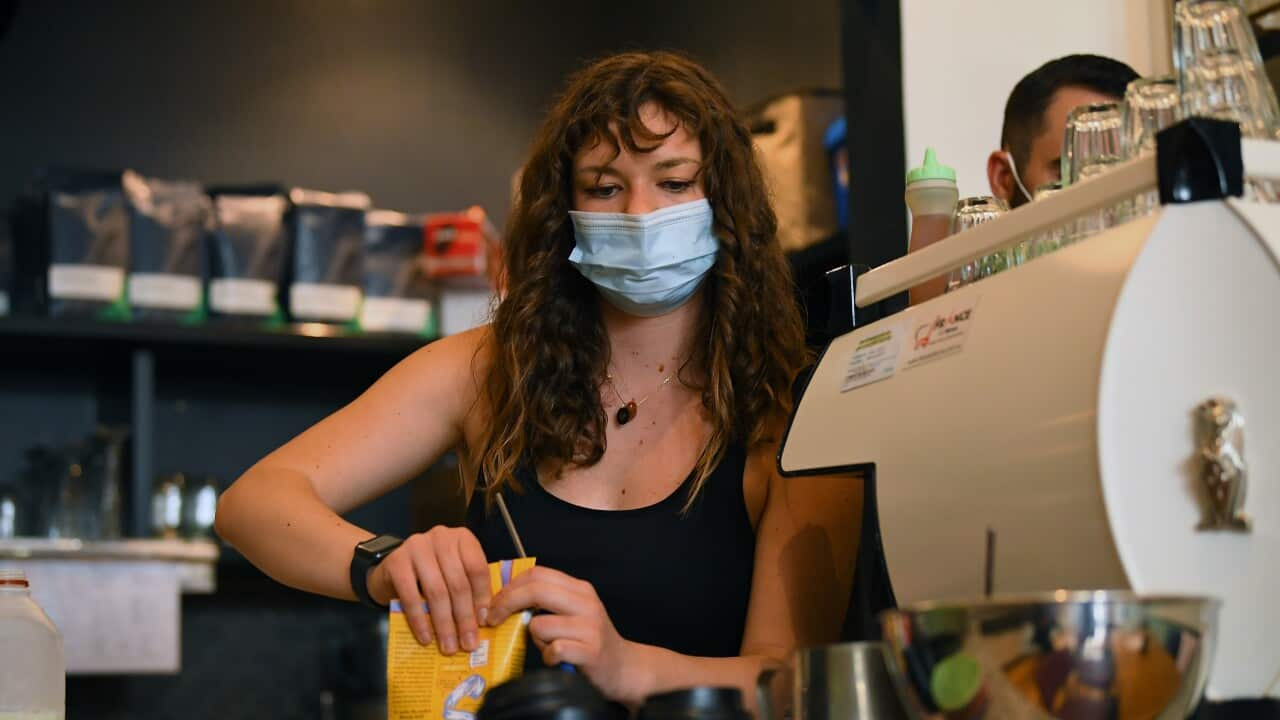Key Points
- A new report found that 3.7 million Australian households experienced food insecurity in the last 12 months.
- A growing number of employed, middle-income and mortgage-holding people are experiencing it for the first time.
- Foodbank Australia is urging those in need to "feel comfortable and confident in asking for help."
Almost half of Australia's general population currently feels anxious about or struggles to consistently access adequate food, according to new data – with most of them experiencing food insecurity for the very first time.
A report by Foodbank Australia, published on Monday, revealed that at least 3.7 million Australian households experienced moderate to severe food insecurity in the last 12 months, equating to an extra 383,000 households that were forced to make unenviable choices about what and when they eat, compared to 2022.
The findings underscore what the food relief organisation describes as a "food security crisis".
"We're seeing it absolutely everywhere," Brianna Casey, CEO of Foodbank Australia, told SBS News.
"What is different this year is just how many demographic groups are being affected and just how many parts of Australia are seeing this for the very first time."
The term "food insecurity", Casey explained, refers to a situation where individuals can't reliably access the money they need to be able to create a healthy meal and lead a healthy and active life.
As the cost of living crisis continues to spiral, the number of people in Australia falling under this definition is not only growing but also spanning demographics that aren't typically impacted — young people, people who are employed, and mid- to high-income earners, for example.
As Casey put it, "A job is no longer a defence or a shield against food insecurity."
The Foodbank report found that, compared to 2022, the first-time food insecure are increasingly metro, middle-income, employed, mortgage-holding, and renting households. There was also a significant increase in food insecurity among households without children.
The cost of food and shelter is now the most common cause of food insecurity in Australia, the report revealed, with the cost of food and groceries reported as the chief contributor to food insecurity.
The impacts of that insecurity, both physical and psychological, can be profound.
"We are increasingly hearing about people who are skipping meals and sometimes going entire days without eating," Casey said.
"But also [there's] the mental health implications of living with this really all-pervasive stress that is hanging over people, worrying all the time about whether or not they're going to be able to find what they need to put a meal together."
'Chronically food insecure'
Karen is one of those people. Since the start of the pandemic, when the price of basic necessities like food, fuel, and electricity first started to climb, the 47-year-old mother-of-one has been struggling to make ends meet.
After being forced to move home to South Australia's Riverland region, she is one of 750,000 households that satisfies the criteria of "chronically food insecure", meaning she is faced with the perpetual challenge of finding a way to put a meal together for herself and her daughter.
"It's a constant feeling like you're never ever going to get ahead because there's so many things," Karen told SBS News.
"You basically become very good at juggling; you are constantly robbing Peter to pay Paul and going without things. I'm constantly trying my hardest."
One such cost-cutting measure was taking her daughter out of a school she loved and enrolling her in a less desirable one closer to home, to save money on the cost of fuel. Karen said that since the move her daughter is "not coping well".
The other way Karen manages her situation is by visiting Foodbank Australia sites, which she credits with keeping her head above water.
Casey, however, worries that many others aren't willing to ask for help. Despite the significant increase in the number of households experiencing food insecurity, the Foodbank report found that the proportion of those seeking help from formal food relief services or family and friends reduced over the same period.
The authors suggest that this could be the result of people experiencing insecurity for the first time, who are thus feeling uncertain or reluctant about seeking assistance.
"[People are] going through a range of emotions that often include feeling embarrassed or ashamed… We need to make sure that those who are dipping in and out of food insecurity, or experiencing it for the first time, can feel comfortable and confident in asking for help," said Casey.
"It's precisely why food banks exist; it's exactly what we're here for, and we want to make sure that those who are struggling feel confident to jump on the food bank website, click on the ‘find food’ button, and get access to the food that they need to help get themselves back on track."
More broadly, Casey wants to see more action from the federal government, not only in terms of resourcing the food relief sector but also focussing on policy settings that could make a big difference to those who are impacted by financial hardship — like making further increases to the rates of Jobseeker, for example, or ensuring that people have access to crisis accommodation and reliable housing.
Karen, meanwhile, wants to see Australia's large supermarket chains throwing away less food that could be discounted and sold to those in need, or donated to food banks for free.
She gives the example of fresh produce, which is often disposed of for aesthetic reasons rather than questions of edibility.
Until the cost of living crisis starts to abate, though, and the compounding expenses of day-to-day life start to fall rather than climb, she remains "very unsure" about what the future looks like.
"It upsets you that at one stage in your life, you're just starting to turn around and get to the point where things are getting better… but you get hit with this and then you're constantly back down," she said.
"You constantly think that, 'Okay, I can never get ahead; I can never get forward; I basically just have to suck it up'."













